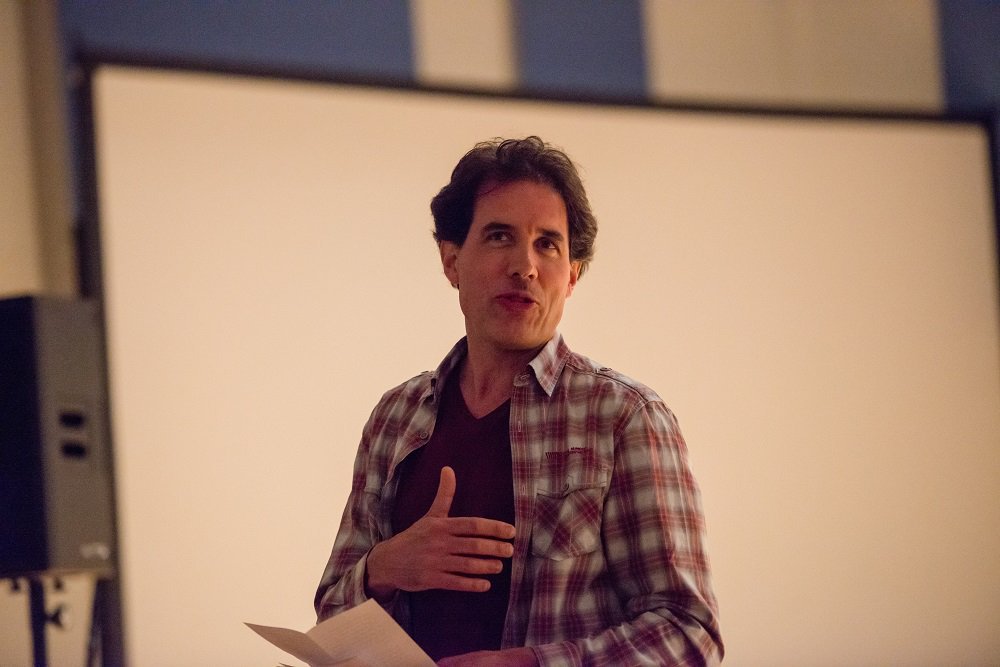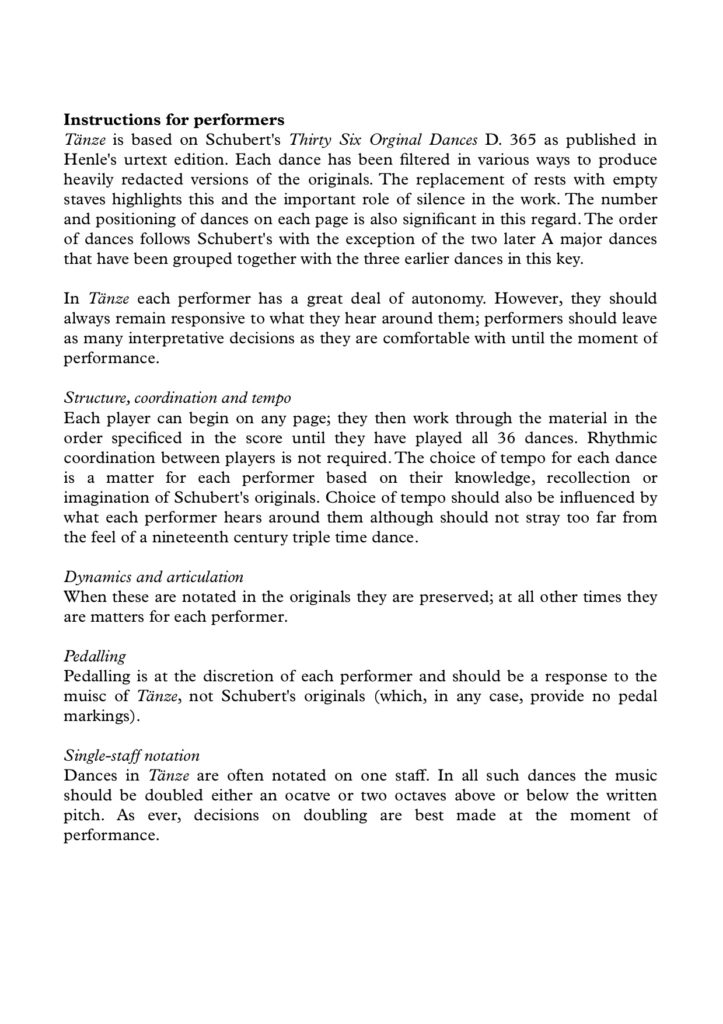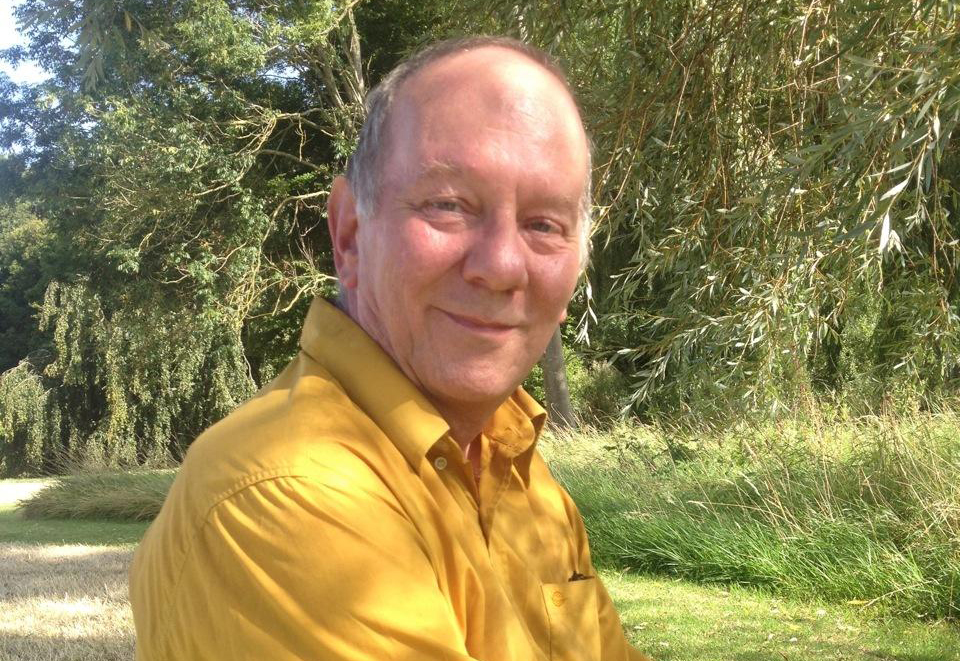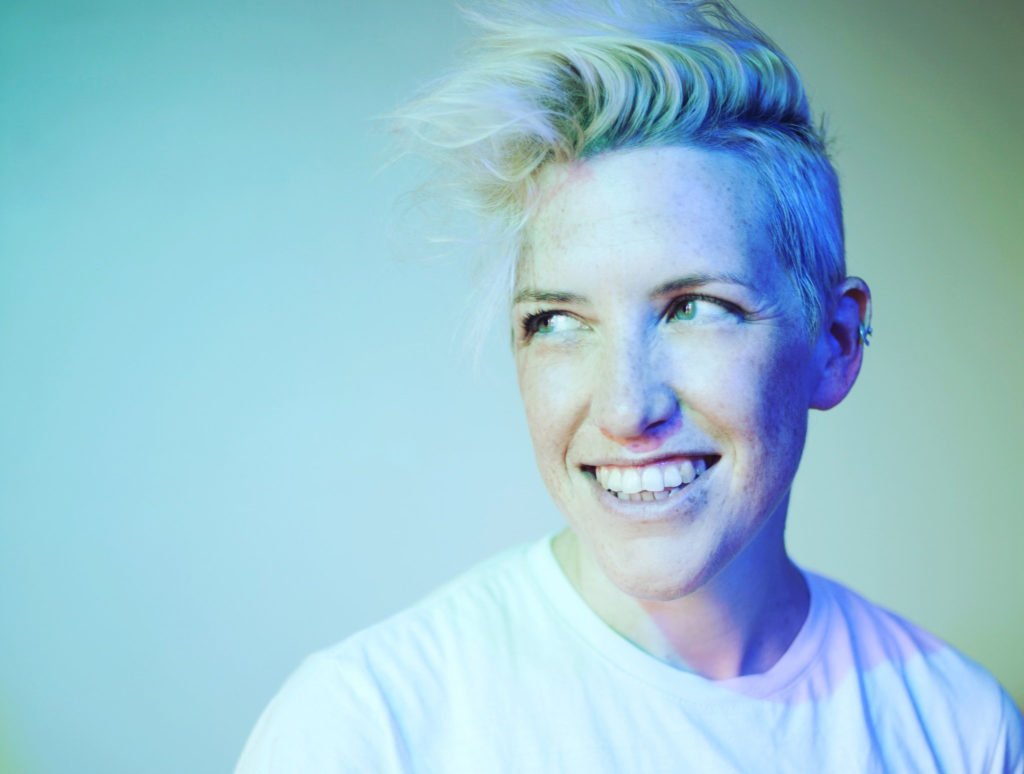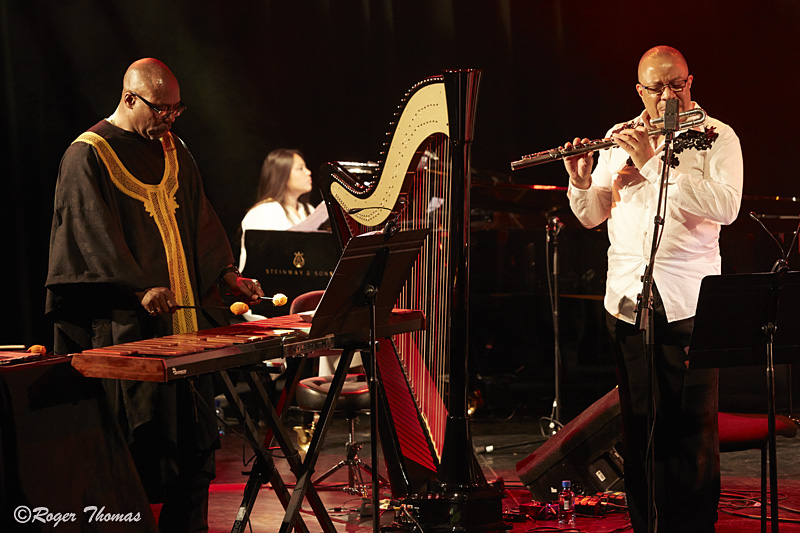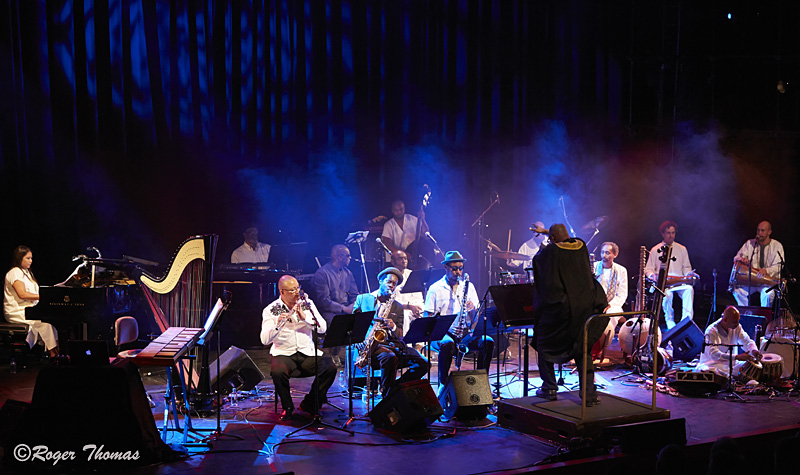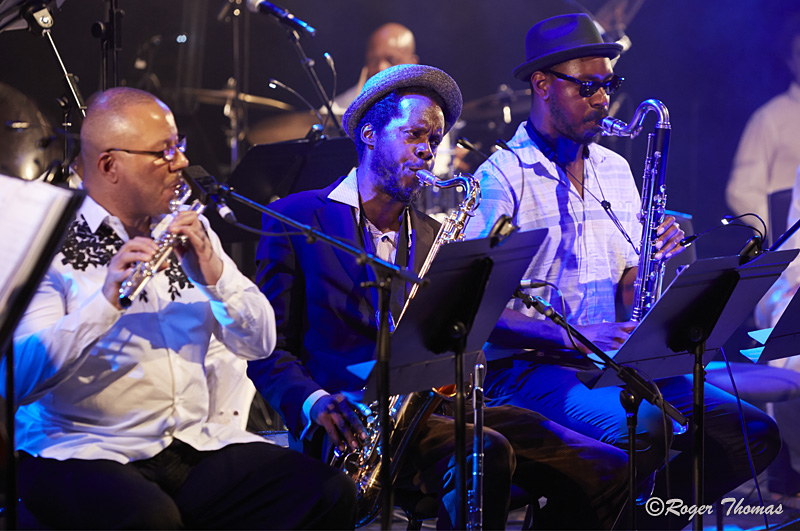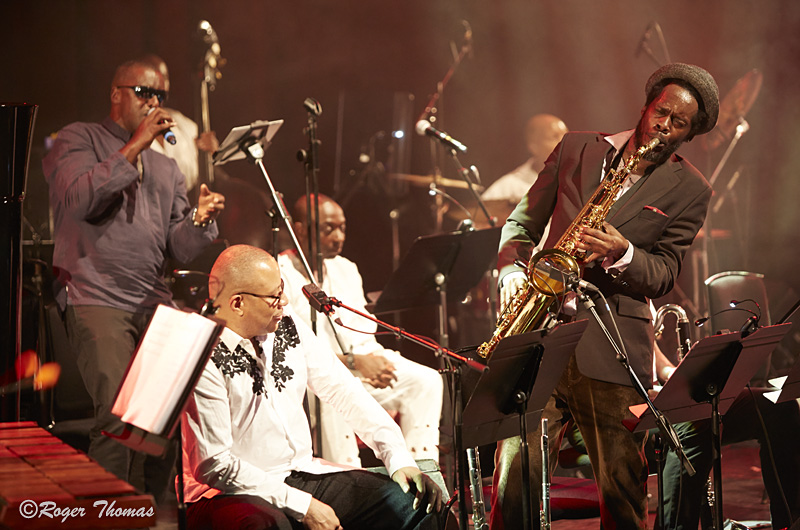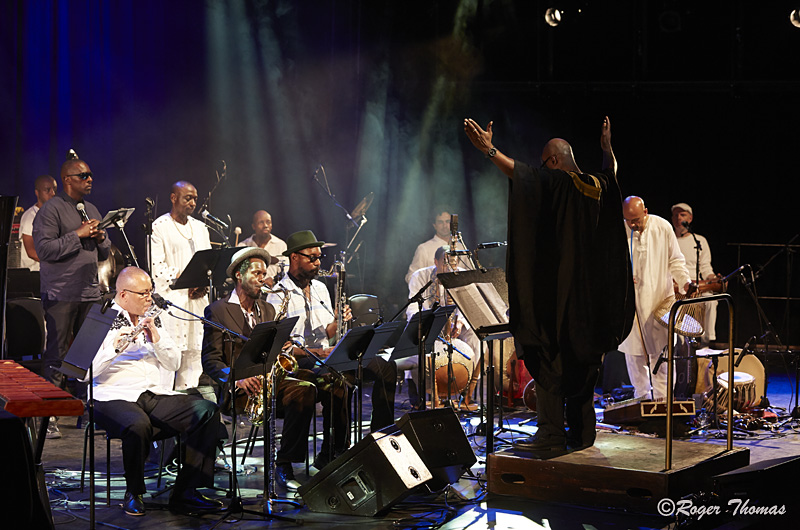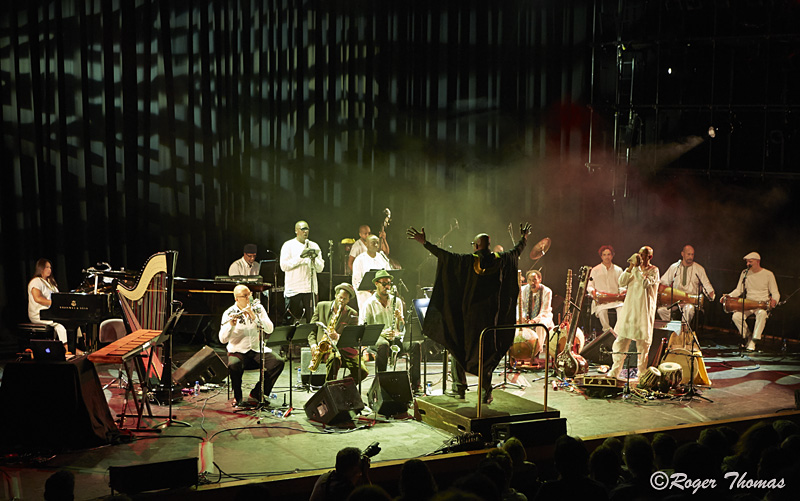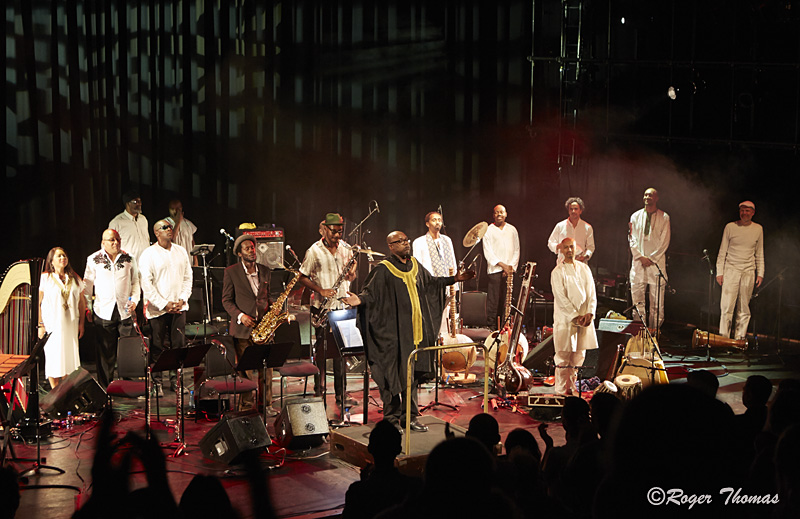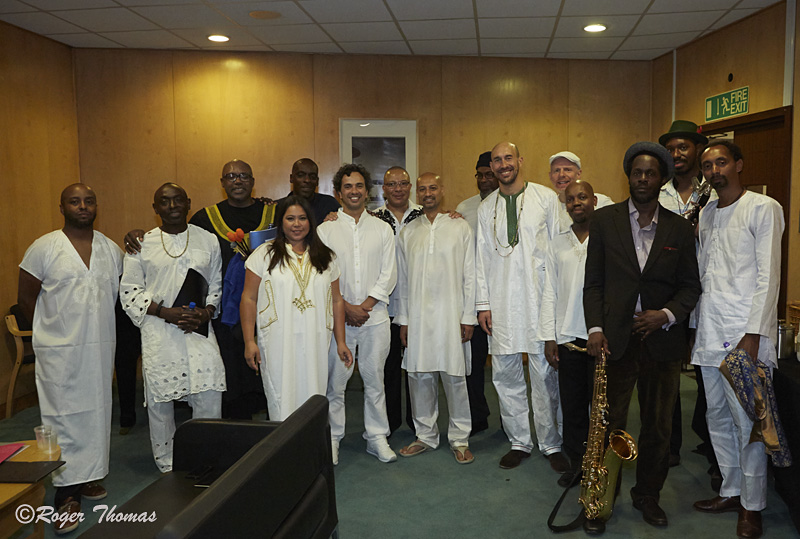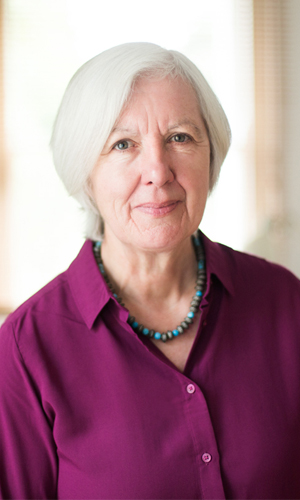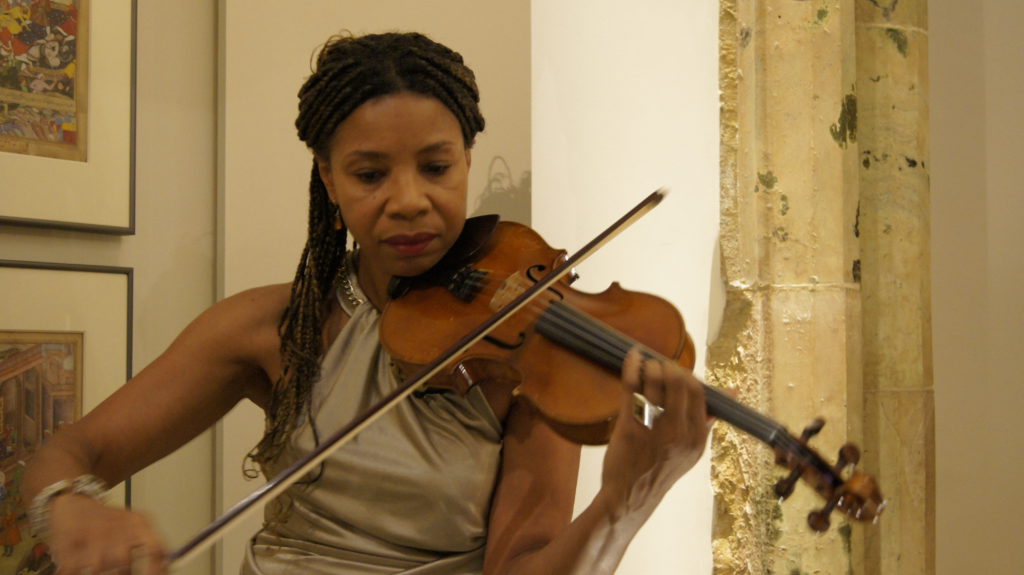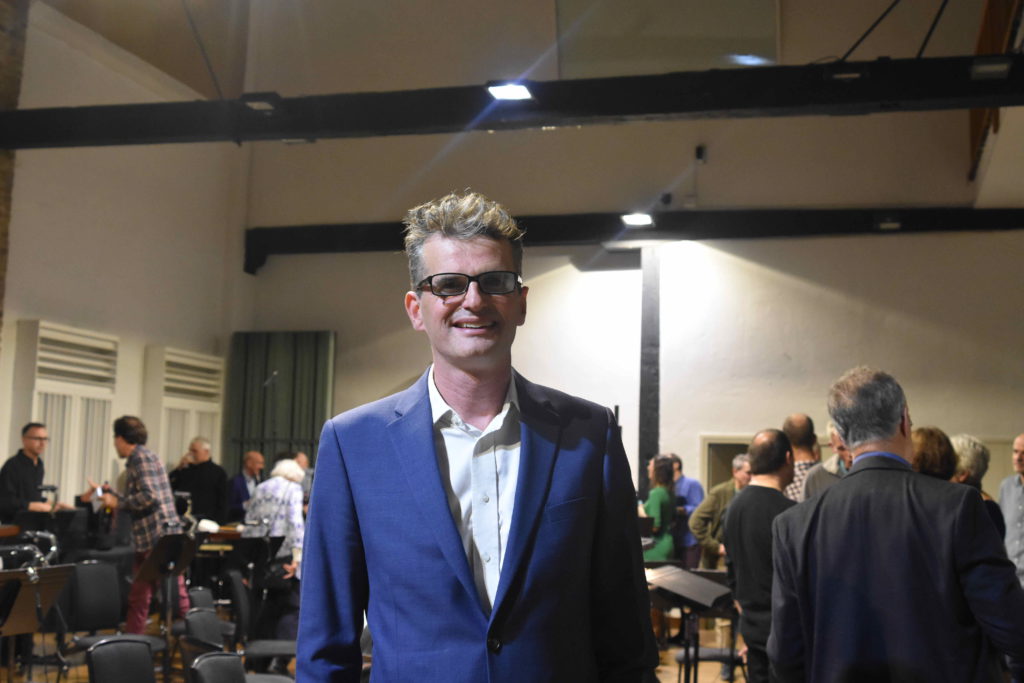
Ed Hughes in conversation with Evelyn Ficarra.
Ed Hughes is a composer and Professor of Composition at Sussex University. In 2020 his third CD with Metier Records, Time, Space and Change, was released, featuring Sinfonia performed by the New Music Players.
In this interview, Ed Hughes and Evelyn Ficarra discuss Hughes’s quotation and transformation of early notated polyphonic music from England in his large ensemble work Sinfonia (2018). The discussion explores how a layered approach to early material in a contemporary ensemble setting may shape process, perception and the listening experience. In attempting to answer the question why plunder and transform earlier music, they also reflect on what this says about the continuing canonical status of certain older music today. Is plundering in fact less about homage and reverence and more about breaking out of canonicity and moving contemporary musical language on?
Evelyn Ficarra: Why do you think composers plunder earlier notated music?
Ed Hughes: Many composers are motivated by a love of earlier music. I believe this comes in part through the experience of taking part in music. An early memory is seeing friends in an orchestra – they were playing Vivaldi – and being on the outside, and thinking that would be amazing to be part of that. And so I learnt the double bass very quickly. Then what followed from that was the bug to write for live musicians, playing in ensembles, in realtime. And so, all of my work as a composer, has always been in some kind of relationship or reaction to the practice of music which in turn has always been actually about performing notated music from the past. It’s a natural relationship between writing music now or today, and a sense of historical awareness that there are these treasures from the past that you are uncovering by opening a music book and trying to play these notes. So why plunder the past? I suppose it’s about making a connection, to define yourself by articulating a relationship to that past stuff. You want to write something that is not merely a repetition of something that’s already been done. It needs to offer excitement and an edge that justifies the plundering.
EF: If it comes from your earlier engagement as a performer, is that the kind of engagement that has continued for you?
EH: For a long time I decided I was not a performer, I was a composer, teacher, organiser of concerts – and the pay back was regular performances of work and building up a relationship with a very special group of musicians, the New Music Players, who share their own knowledge and understanding of repertoire and musical traditions through the actual live action of performing your own music. That’s very exciting and rewarding. So, it is the case that I saw myself as a composer and teacher primarily, but in recent times – picking up the baton with the orchestra at Sussex University where I work, that’s been fun and brings you into direct contact with these canonical pieces of western classical music which you then attack with a mixed ability orchestra. And that has been an unexpected pleasure – because there’s the aspect of musicianship – you have to have some responsibility to be prepared and say something about the music – but there’s the actual experience of being in the middle of it which I think is very interesting, and has given confidence in terms of how I write, or how I suggest options for student composers to develop. For example, instrumental balance, orchestration and how these link to forms that live and breathe, are problems that people have solved before (for example, mixing of colours in Claude Debussy (1862-1918) La Mer (1903-05) or sense of forward motion in the symphonies of Ludwig van Beethoven (1770-1827).
EF: That’s really interesting to hear you talk about that – you’re talking about a direct, physical involvement in the music, in the sound, surrounded by the sound, in the act of music-making.
EH: Yes. I think that’s very important. The idea is that actually when you are making that music it’s about the now – it’s not about seeing it through sepia. It’s actually – when it works – whether the music is from 1600, or 1900, or 2018, it’s very present, that’s the excitement of live performance.
EF: So what I was connecting this up to, or contrasting this with, is that alongside this engagement with the practice of live music, you are also very dedicated to notated music – scoring and working music out in a notated form. So how do those two things relate to each other do you think?
EH: The kind of live performance that I generally engage with comes out of notated music. I’ve got huge admiration for Martin Butler and Peter Wiegold’s notes inégales ensemble and others who cross the border and connect composition and improvisation. For the time being my choice is to continue to work with notated composition. I do think it is extraordinary that skilled musicians can recreate sounds that were conceived centuries ago almost instantaneously, by responding to the medium of notation. And so how things become present when they originate in the past is radical and exciting – and can give people something that’s important that they don’t experience that much – historical consciousness through art. There were people who were around in 1600 who were modern in the sense that we are now. I’ve just discovered a video of Philip Glass (b.1937) Einstein on the Beach (1975-6) from a new production in 2014, directed by Robert Wilson – and I’m just beginning to understand the sensibility and aesthetic of this four hour piece. There is this sense that notated music provides archaeology of culture of 1975 which in some ways is as distant, or as close, as 1607.
EF: Can you talk about your Sinfonia (2018) in terms of the detail – how you interface with the earlier notated musics?
EH: In my conversation with Judith Weir she agreed that it is interesting when composers recompose old music – and Judith herself spoke about her work in which she responded to Pérotin (fl. c. 1200) – but also signalled that she felt it was a specialist thing to do, and she would not necessarily do it again. It would not be right, she argued, to say constantly now here’s my reinterpretation of Mozart, or Hildegard; which is a good provocation to have…. And it makes me want to say that Sinfonia is more than simply a set of arrangements. Sinfonia came out of a set of complementary motivations – a desire to respond to and ‘write through’ early notated music certainly, but also to go back to one of the impulses for composing in the first place; and one of those impulses was the discovery of the structures and the sounds of fifteenth and sixteenth century English vocal polyphonic music. So I suppose Sinfonia, which I wrote intensively between January and August 2018, was a vehicle for going back over how I made sense of first encounters with this music, and to ask myself the question how much has my musical voice rested on or been developed by that formative experience of discovering the structures and the sounds of early music – medieval and renaissance English music in particular. So it was a conscious project to take six pieces from roughly 1415 to 1600 and to recompose them. And that meant taking pieces that existed as vocal works, and transforming them into instrumental works for a relatively large modern contemporary ensemble (17 musicians). So I suppose it is an act of musical appropriation – transforming it by working with the sound. It’s a two-fold thing – because there is an element of homage, and transformation. For example, I love the – dangerous word – harmony of John Dunstable (c. 1390-1453).
EF: Why is ‘harmony’ a dangerous word?
EH: Because it’s anachronistic? There are no early music scholars in the room so I can speak about this! What’s fascinating – Martin le Franc (c.1410-1461) the French poet, said, in Dunstable’s own lifetime, that the sound of Dunstable’s music has a special quality – so you have that contemporary reference to an English soundworld disseminated across Europe through copying of musical manuscripts.
EF: So you mean we are not supposed to call it harmony because it’s polyphony?
EH: I think so. If I said there’s a cadence at this point that might be a controversial way of understanding early compositional processes. But the fact is that the sonic beauty of some of these early pieces – whether radiant or strange and mysterious is an element I wished to highlight and reflect on in my own recompositional work. There is a strong sense in which the fifths and the thirds combine to yield sonorities which are extremely intense and beautiful in the context of that music. So, there’s the aspect of homage to this early music, and also the aspect of wanting to take it and use it to understand one’s own voice and new directions in terms of personal compositional development. It is this feature that makes it a pivotal work for me.
EF: You used quite a strong word just now – appropriation in terms of rethinking existing music.
EH: Yes, that may not be the right word but recomposition does involve taking something out of its context and placing it in a new one. In addition there is the matter of moving from the vocal to the instrumental. However in another way that actually resonates with a process that went on through the period covered by Sinfonia, from 1415 to 1600 – that of recycling and appropriating vocal music and developing it in new and unexpected ways in instrumental settings. I suppose I was reflecting almost a feeling of ‘what have I done’? I’ve taken mainly unaccompanied vocal polyphonic music and have started to write it for a horn, or a grand piano, or percussion and so on. What am I doing? A better word might be transformation. There has to be some active role for the composer in this process. I was talking with popular music scholar and colleague Mimi Haddon recently. Mimi has been challenged recently to say something [confessional] about where she is coming from in the context of writing an introduction to a new monograph; she was really interesting about the issues of gender and politics in popular music writing. Essentially whenever we write a book about anything, it’s about us. If that is even to some extent true of scholars, it’s certainly got to be true of composers. So on one level it’s all about me(!) but in another sense perhaps it means that through the process of composition, and through acknowledging my subjectivity, I can say something about Dunstable that can’t be said any other way and that may yield something of value.
EF: How important to you is it that the original is legible, or do you like obscuring and hiding the original?
EH: I think in movement 1 of Sinfonia, which responds to the Agincourt Carol (1415), the main melody is strongly delineated and it is evident that it is there, if you know the original, even though it is simultaneously transformed by various methods. And made almost cubist – like those famous Picasso portraits where the strong lines of the figure are clear but you see several perspectives at the same time.
Example 1. Hughes – Sinfonia, Movement 1. Extract. The trumpet and then oboe carry the main tune from Agincourt Carol transformed by registral displacement and a completely new context.
Whereas, in the second piece, which is inspired by a motet by John Cooke (c.1385->1442), called Stella Celi Extirpavit, the tunes are there, from this delicate little 90 second three part motet, but they are as it were sinking beneath the weight of all the other things going on around them. And that’s the way I’m speaking about this piece – where a creative role impinges – it’s not merely an arrangement. In the sections like Stella Celi the original starts to dissolve in the other stuff around it – so it provides a starting point and then disappears.
Example 2. Hughes – Sinfonia, Movement 2. Extract. Cooke’s original three part motet Stella Celi Extirpavit is in the wind lines (in red) which are enmeshed in music coiling around it through a process reflecting the chromatic turns of the original
So in the Dunstable section, movement 3 of Sinfonia, there’s a bit of both going on – I can identify fragments from the original that surface – melodic shapes for example – they sit almost as quotations. Simultaneously there are other aspects of the relationship with the original which are more oblique or transformed.
Example 3. Hughes – Sinfonia, Movement 3. Extract. Fragments of Dunstable’s motet reworked through compositional processes and layered over Dunstable’s changing harmony represented by cello notes (in red)
EF: I love that word you use – “sinking” – that the material is sinking into this other material – like waves – to keep the same metaphor going! But when I listen to it the metaphor for me is undergrowth or overgrowth, or the sense of other tendriles supervening. Because it’s very complex and dense often – very layered. Are you interested in talking more about specific techniques that you use? How you abstract your materials?
EH: I really like that metaphor – it implies a process of ornamentation. So we’ve touched on the first three movements. Then movement 4 is in response to Tallis. And that was actually the one I wrote first. This started off as transcription for ‘Pierrot’ ensemble of a motet for the University of Sussex Attenborough Centre’s Tallis Festival (2018) – quite a late piece, from no later than 1575: In ieiunio et fletu, in Cantiones Sacrae, ed. Byrd & Tallis (1575). It’s about priests pleading on behalf of the people for forgiveness, and occupies quite a dark piece – but the harmony has clarity and an extraordinary volatility. I can only think that this was intended: the very sharp swerves in the harmony are quite breathtaking. But they are more imaginative and logical somehow and less mannered than say Gesualdo. So Sinfonia‘s movement 4, began life as a transcription, as a homage.
But I was talking a few weeks ago to Robin Holloway and as part of preparing for that I rediscovered his fine response to Bach’s Goldberg Variations, The Goldberg Variations were written for one player but on a two manual harpsichord – and so the hands often crossover. Robin’s thought was that you could transcribe the Goldberg Variations for two pianos so that you would overcome the clashing hands. He has a great phrase. As he started to work on the transcription, ‘interference crackled the transmission’. He means by that his composer’s mind, uninvited, started to add things between and above notes. And I suppose that’s what I feel about my experience of transcribing the Tallis piece for a modern ensemble. You can hear that in the decoration and ornamentation going on in some of the instruments, particularly the piano. But it was the violin that became almost a piece in its own right – the violin could conceivably play its line as a piece on its own – and then the Tallis motet would slip away. So the violin is a commentary upon the original and in itself something new.
Example 4. Hughes – Sinfonia, Movement 4. Extract. The original lines of Tallis’s motet In iejunio et fletu are heard distantly spaced between instruments such as the high flute, low clarinet and mid piano. The violin is on its own path – reflecting and extending Tallis’s expressive world.
EF: When your composer’s mind is finding new things to do, what’s your go-to domain – do you think timbre, or hamony? These moments make me think of other harmonic possibilities…
EH: I think you’re right – it’s harmony and colour. Harmony and timbre. I suppose that places me firmly in the classical and modernist tradition, but actually I feel less and less concerned about dividing lines, and more and more interested in how things connect and what underpins musical experience and musical excitement. That’s why I’m pleased that Sinfonia in effect crosses borders by taking cues and ideas from historical ‘folk’, sacred music, domestic music making genres and street songs.
In terms of ‘domains’ and thinking about compositional process though there are two things I do that are fairly consistent. One is a kind of counterpoint between the diatonic and the chromatic. And I usually think the diatonic as a background thing – with the chromatic heard as ornamentation. My densest work occurs when the chromatic material is foregrounded and almost displaces the diatonic. And yet the diatonic is still there. I think that goes back to being introduced to plainchant by attending Prof Alexander Goehr’s lectures at university, and his notion that it could shape the form of a piece as well as the line. And another thing that is related to this – because I’m interested in counterpoints – not just classical counterpoint – of textures, blocks, colour, and durations, and co-existing tempos. This strangely fitted in with the realisation that minimalist composers, as well as Ligeti, Cage and others, are strongly indebted to non-classical, non-mainstream and non-Eurocentric approaches to rhythm and rhythmic structure.
EF: Does your approach to rhythm bear these other influences, or perhaps via these other composers?
EH: For me, I would argue that I found these elements were most powerfully forged through early notated polyphonic music. But, yes, definitely. I studied Cage’s String Quartet in Four Parts (1950) when I was a student, and this strongly affected me. Not least because Cage himself told me about the Webernian canon that runs through the third movement.
EF: That’s interesting because I was really struck in looking at the score by some of the shifts in rhythm where you are, bar by bar, changing the rhythmic pattern of notes in the strings particularly in the opening of movement 3 of Sinfonia ‘Veni Sancte Spiritus’. Here, you experience shifts bar by bar, which to me is a really elegant combination texture and harmony and rhythm all at once – and allows us to perceive these shapes simultaneously.
Sinfonia – Movement 3 – opening – extract from Ed Hughes on Vimeo.
Example 5. Hughes – Sinfonia, Movement 3. Extract (opening). The rhythmic patterns in the violins are freely formed in 3s and 4s around underlying harmony, creating a sense of textural flow and drift.
EH: Thank you. You could also argue that Dunstable is helping me here to be a little more fluid. Because the strings, particularly the violins, are, essentially, following, tracking, or working through, the harmonic implications of Dunstable’s music. And of course Dunstable’s harmonies are always coherent and yet constantly shifting to reflect the literally layered texts.
Richard Taruskin argues that earlier composers rejected the old music that existed before their own time as inferior. Now it’s the reverse – we canonise old music, including old ‘modern’ music, at the expense of new music. And so, coming back to your opening question, why do composers plunder old music: the appropriation and remaking of old music could be seen to as a necessary reaction or correction to this state of paralysis in western art music – in reinventing the old music we take ancient pioneering music and remake it now, to infuse music today with fresh perspectives and expression and break away from the museum culture.
EF: The overall structure of Sinfonia is very strong with each individual movement having its own particular world. And one thing that stood out for me was the fourth movement – where to my ear the original material is more legible than it has been previously and is subsequently. And so it struck me that this notion of legibility is in itself a kind of structural element to the whole piece, because if you had something that is more legible earlier on it would have been almost too easy. But that, the complexity draws us in – so that while we know that it’s based on this old music, we are listening in a slightly different way than we would to something that didn’t proclaim that it’s based on, or a homage to, something earlier. I was always listening out for things that I might recognise, or relate to my own experience of that older music. And then in the fourth movement it flowers – it opens out – and there it is – and it’s like the light comes out for a bit. And everything transcends in a more effortless way, and that’s really powerful structurally. Not that everything leads to this moment, but it’s like a little gift that you get, and then the overgrowth comes in again and you’re pulled back into that more complex, layered, way of listening.
EH: Thank you again! One thing I was trying to say, probably because I was being a bit paranoid about being accused of being nostalgic or retrospective, I was clear that it was not a classical symphony – it’s not a symphony in the sense of having a fast, slow, scherzo, fast type structure. It isn’t that. But maybe I’m worrying too much because perhaps at a kind of archetypal level those patterns you are identifying – like how and when you play the ‘cards’ of composition – and with what intensity and volition you play them – I guess that’s something we share (whatever compositional aesthetic we have). So yes what you said is very interesting – withholding and then conferring clarity. Because actually that’s another and probably quite refreshing way of thinking about the symphony including recent symphonies. I met the composer Martin Butler for a conversation recently; and we touched on Berio’s Sinfonia briefly; because Martin said of course that the ultimate quotation is the Mahler movement in Berio’s Sinfonia. So I then said, yes, that is an amazing piece, but even more influential on me, personally, was the O King movement, which is the second movement, and I was talking about the orchestration; and Martin said, well you do know that that’s the slow movement of the symphony – and I hadn’t really thought of it like that. So that Berio is in fact speaking directly to the Beethovenian symphonic form. Radical, yet referencing a recurring pattern.
EF: I wasn’t thinking so much of symphonic form, I suppose, but rather that [your] Sinfonia is a group of pieces that are deliberately together, and that the process of flowering is designed into it, so that they have to proceed in a particular order even as their sources are multiple.
EH: I do like this idea that there is a journey across it and it is not simply a set of fragments.
EF: Yes – definitely – the journey and the sense that the pieces speak to one another across it.
I’m curious about what is coming next for you as a composer?
EH: I know I’m writing a piece for string ensemble in spring 2019. I haven’t got a strong sense of what the piece is going to be like yet, but I have got a title – it’s going to be called Flint. This will reference the environment of the Sussex Downs. It will be a concert piece but it will connect to my 2018 Cuckmere project and interests in the relationship between music and the external world.
EF: So no more Tallis for the moment. Do you feel like, when you are composing music, and not using an external source as a prompt, is it your whole oeuvre that is then your external source in a way? It’s like you are referencing yourself at the same time as trying to do something new?
EH: I think it’s something that you can’t control. It’s probably a problematic thing to say or generalise about, but I think it is a good thing if at some meta level there is a unity to one’s interests but perhaps it is best if this is unconscious and revealed in the work itself. In fact, that is my best experience of composition – when one attains a sense of flow which transcends pre-determined structures and planning. If one looks at a scholar like Richard Elliott, for example, no matter what his subjects are his work is driven by certain underlying preoccupations. That’s probably true for composers as well. And it’s probably impossible – no matter how much one would like to for purposes of applying to the AHRC or whatever – it’s probably impossible to say definitively ‘I am going to deliver this, this and this.’ This brings me back to the problem is composition research? And my immediate answer to that is ‘yes, it is, when through its very processes it produces new sensations or insights’.
EF: I agree!
EH: But then what do you say after that. Because you then have to acknowledge the precarious or provisional nature of the work… I think I am doing a form of research whenever I write. I don’t write unthinkingly. And I produce stuff that one can share.
EF: I think the problem for us is that it is research but in a different language, that not everyone speaks, necessarily. And not everyone understands verbally. And we’re obliged to explain it using words, so that people can understand it … because I suppose it’s a smaller group of specialist people who will understand certain aspects of the research. But we want the music to be understood by a broader range of people. And we want it to have value for them, and anyone who listens to it. So it is fair that we need to explain our work and include our own reflections too. Yet for me the truth is that, at some level, that’s always a parallel discipline. And so that’s a challenge in an academic setting. I have one more question – what might be interesting is to interview you about the interviews! I am curious about whether people shared ‘in points’ to this type of composition, for example.
EH: That’s something that’s come out of the interviews – it’s a form of witness that’s not normally revealed – one’s formative practical engagements and where that initial impulse to compose comes from. And actually people don’t realise that, but it is revealing and often resolves the tension between apparently abstract methods and the sources of compositional ideas.
